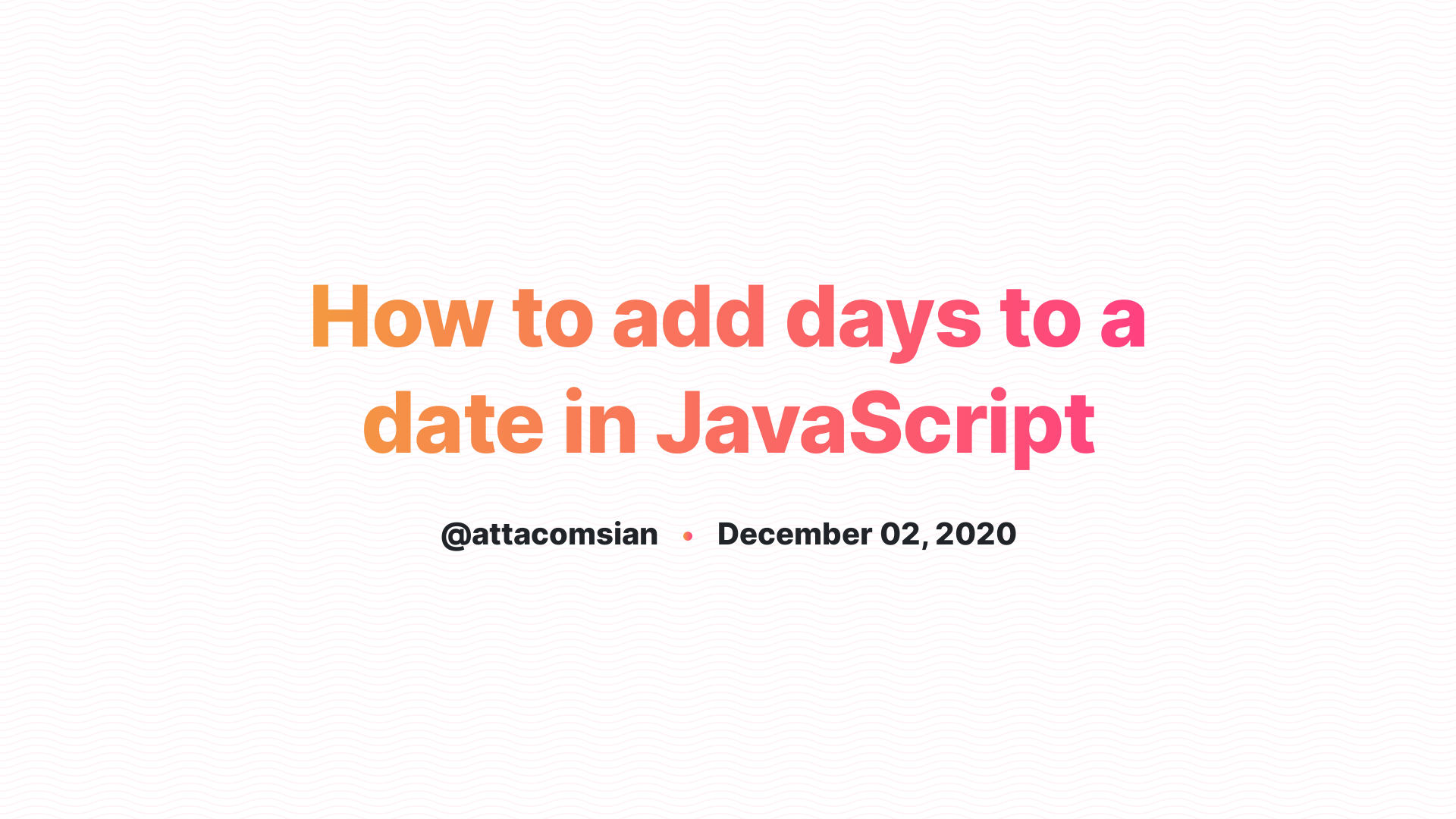
Putting together the above commands, we can create a JavaScript function to add n days to a given date d1. You can set another date d2 to the above value using setDate() function.

Please note, you cannot directly add days to a Date object, but you can do so to the result of getDate() function called on it. We simply call getDate() function on our starting date and add number of days using addition operator. For example, if you have a date object d1 and want to add n days to it, then you can do so with the following command to add n days to it. It also supports a function setDate() where you can set it to a new date. Every date object in JavaScript supports adding dates using mathematical operators. Here are the steps to add days to date in JavaScript.
#Setdate javascript how to
In this article, we will learn how to add days to date in JavaScript. While there are many popular third-party JavaScript libraries such as Moment.js, you can also do this using plain JavaScript. But sometimes you may need to add days to a specific date in JavaScript. ago"Īlert( formatDate(new Date(new Date - 5 * 60 * 1000)) ) // "5 min.JavaScript allows you to work with dates – create, modify and compare dates. If (diff component.slice(-2)) // take last 2 digits of every component Let diff = new Date() - date // the difference in milliseconds For instance, browser has performance.now() that gives the number of milliseconds from the start of page loading with microsecond precision (3 digits after the point): JavaScript itself does not have a way to measure time in microseconds (1 millionth of a second), but most environments provide it. Sometimes we need more precise time measurements. Note that unlike many other systems, timestamps in JavaScript are in milliseconds, not in seconds. Use Date.now() to get the current timestamp fast.Example: In the following web document setDate() method sets the day of the month to 23 of a given. dayValue : An integer from 1 to 31, representing the day of the month. That’s because a Date becomes the timestamp when converted to a number. The setDate() method is used to set the day of the month for a given date according to local time. Dates can be subtracted, giving their difference in milliseconds.

Good for adding/subtracting days/months/hours.

That may lead to wrong results.įor more reliable benchmarking, the whole pack of benchmarks should be rerun multiple times. And by the time of running bench(diffGetTime) that work has finished.Ī pretty real scenario for a modern multi-process OS.Īs a result, the first benchmark will have less CPU resources than the second. Imagine that at the time of running bench(diffSubtract) CPU was doing something in parallel, and it was taking resources. Wow! Using getTime() is so much faster! That’s because there’s no type conversion, it is much easier for engines to optimize.

Return date2.getTime() - date1.getTime() įor (let i = 0 i < 100000 i++) f(date1, date2) Īlert( 'Time of diffSubtract: ' + bench(diffSubtract) + 'ms' ) Īlert( 'Time of diffGetTime: ' + bench(diffGetTime) + 'ms' )


 0 kommentar(er)
0 kommentar(er)
